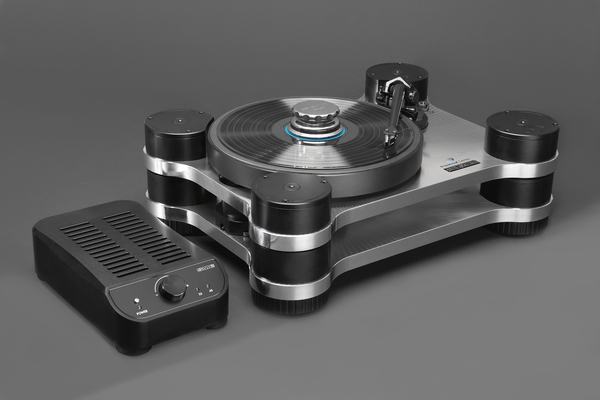Three steps to quickly release human potential with gen AI
Sponsored by Softwire
GenAI is coming for you and your business, replacing humans in a merciless technology cull. Or is it?
The zealots believe so, while naysayers and head-in-the-sanders are in a state of denial. And then there’s everyone else: the Great Uncertain. The answer, as ever, is nuanced.
Harvard Business School professor Karim Lakhani probably sums it up best: “AI won’t replace humans – but humans with AI will replace humans without AI”.
There is no arguing GenAI’s potential. Over three-quarters of business leaders globally now recognise GenAI’s competitive advantage and half of the global organisations surveyed are using GenAI in at least two business functions.
There’s an imperative for those without billion-dollar budgets to find real value. And that value lies within their talent. Because ultimately, GenAI is about releasing human potential. So having logical, frank and honest discussions around mastering the art of human-AI collaboration is a priority.
Methodologies such as the 3A framework (automate, accelerate, augment) can drive these discussions, helping smaller organisations to find low-cost, low-risk investments to begin their AI journey. It’s a simple blueprint for quickly finding areas where you can take menial work off your workforce’s backs so they can focus on adding the value only humans can.
Automate: let people do their best work
Building on simple automation gains, GenAI can liberate the workforce from repetitive tasks that are slowing them down and distracting them from the work that really matters.
In the automation step, you identify these high-volume, low-complexity tasks that impact costs and impede human creativity. Call centres, in industries such as healthcare, are a natural target. Companies such as Hyro are using GenAI to direct only complex queries to agents, while diverting simple calls (such as rescheduling appointments) to self-service channels.
Real estate is also finding compelling use cases. Coldwell Banker is letting its agents get on with more critical parts of the client journey by using GenAI to generate accurate listing descriptions and images captions in minutes.
Elsewhere, the education sector is finding ways to let teachers focus more on teaching. Potential use cases include a chatbox that reviews and grades essays and exams, as well as scheduling classes. Udacity is taking it to the next level with Open AI’s GPT-4 to create virtual mentors. Analysts at Morgan Stanley Research forecast that these innovations could generate $200 billion in extra value.
These AI mentors, however, are designed to complement real-life mentors to mitigate erroneous output. And this complementary dynamic underscores the criticality of regular human monitoring to optimise outcomes.
Accelerate: let people work faster
If automation is about removing barriers to execution, acceleration is about making that execution as fast as possible with minimal effort and resources.
Retail is an obvious example, where speed to market is the often the dividing line. For example, Shopify Magic is using GenAI to create smart and simple workflows for launching and managing businesses. The chatbot creates optimised personalised customers journey to increase conversions and sales. Meanwhile, French supermarket Carrefour is using an AI-powered chatbot to produce personalised menus and shopping lists for time-poor 30 to 40 year-olds who can struggle with balancing work and family life.
When real-time agility is a real difference-maker, but often hard to accomplish thanks to operational complexity, these types of GenAI wins make total sense, and are relatively easy to incorporate. That said, it’s vital to have robust data analysis and modelling capabilities to ensure accuracy, as well as a culture of agility to enable organisations to strike when the iron is hot.
Augment: give the people the information they need
How much time is wasted looking for information? Or even trusting that information once you have it? The augmentation step seeks to banish this pain.
Accurate analysis and forecasting for faster, more informed decision-making and problem solving is where the greatest gains can be made.
In healthcare, the World Economic Forum believes that a GenAI virtual assistant can provide a viable second opinion for evaluating records for missing patient formation or even making alternative diagnoses. The potential is massive for healthcare professionals seeking to find the right treatment sooner, not to mention spending more time on patient care.
Machine tool company Bosch believes it can transform its manufacturing, making six figure cost savings via the use of GenAI. Small errors can often result in expensive batch recalls, and GenAI-based inspection can tackle this with the ability to generate artificial images of all defect types, including product lines. Adding this extra step to the assembly line reduces pressure and protects frontline workers, as it enables them to focus on their day job with renewed confidence.
Run towards the challenge
GenAI really is coming for you and your business. But that can be a good thing if you embrace it with the right mindset and approach. And that starts and ends with your people – and pushing the ceiling of what they’re capable of.
For more information, visit softwire.com


Business Reporter Team
Related Articles
Most Viewed
Winston House, 3rd Floor, Units 306-309, 2-4 Dollis Park, London, N3 1HF
23-29 Hendon Lane, London, N3 1RT
020 8349 4363
© 2024, Lyonsdown Limited. Business Reporter® is a registered trademark of Lyonsdown Ltd. VAT registration number: 830519543





